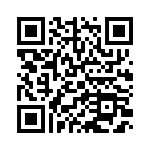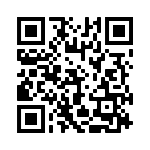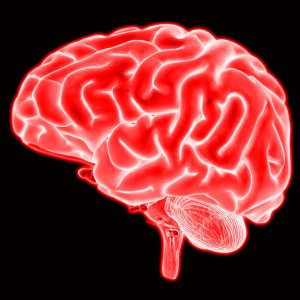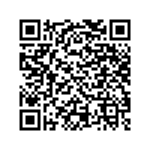5 Conscious Discipline with Dr. Becky Bailey
We live in the age of the brain. With increasing research and knowledge about childhood trauma and its impact on the brain, we want to know how educators can put this science to use in the classroom. We had the privilege of speaking with Dr. Becky Bailey about her ground-breaking Conscious Discipline Program.
Dr. Becky Bailey

 Dr. Becky Bailey is an award-winning author, renowned educator, and internationally recognised expert in childhood education and developmental psychology. She is the creator of Conscious Discipline, which has impacted an estimated 17 million children while inspiring and training more than 3.5 million educators and caregivers. Conscious Discipline is practised in over 73 countries with resource materials offered in 22 languages. Over 2.5 million of Dr. Bailey’s top-selling books are in circulation. With over 35 years of experience working with the most challenging children, Dr. Bailey deeply believes we must transform the lives of adults first and children second.
Dr. Becky Bailey is an award-winning author, renowned educator, and internationally recognised expert in childhood education and developmental psychology. She is the creator of Conscious Discipline, which has impacted an estimated 17 million children while inspiring and training more than 3.5 million educators and caregivers. Conscious Discipline is practised in over 73 countries with resource materials offered in 22 languages. Over 2.5 million of Dr. Bailey’s top-selling books are in circulation. With over 35 years of experience working with the most challenging children, Dr. Bailey deeply believes we must transform the lives of adults first and children second.
Click or scan the QR code to learn more about Dr. Bailey’s work.
Dr. Bailey: I’ve always been a teacher, though growing up, I initially thought I wanted to be a medical doctor. When I was getting my PhD, I interned at a toddler school. My experience at the toddler school spurred me on to learn about how the brain works and how we can use optimal environments and strategies to grow to our maximum potential. I’ve also had some trauma in my personal life, so that led me to want to be a teacher and work with marginalised children.
The Conscious Discipline Program
Dr. Bailey: I’ll describe the program in two ways. The official academic description of the program is that it’s a ‘comprehensive brain-based self-regulation program’ that combines social and emotional learning, school culture and discipline into a systemic whole. Now how I explain it to people in everyday language is that with Conscious Discipline, we’re trying to help people of all ages, adults, and children, be disciplined enough to set and achieve their goals, despite distractions. That’s my definition of discipline. It’s not punishment. You’re conscious enough to know you’re off track and willing enough, which means you’re loved, cared for adequately, and feel you belong enough to return to your path to living your highest values.
Dr. Krishnamoorthy: I’m curious about the way you explain discipline. It struck me that it taps into the concepts of persistence and grit. These attributes don’t exist in isolation. You can persist in and have discipline with things when you feel cared for, and someone takes an interest in your persistence with the task, in this case, emotional regulation.
Dr. Bailey: I believe we need to have ‘consciousness’ to know you’re going down the wrong path. For instance, you can persist, be vigilant, and be a serial killer. The ‘consciousness’ implies we have to have an ‘integrated brain’ to get to the higher centres of our brain; we need to have space and time for thinking and reflection. This thinking and reflection is the key to being ‘conscious’.
Dr. Ayre: Traditionally, discipline is seen as punishment. discipline is usually seen as something done to people or children to extinguish a particular behaviour, not to help them learn. In thinking and reflecting, the element of consciousness is not incorporated into this view.
Dr. Bailey: Yes, you’re right there. I like the quote, “discipline is not something you do to children; it’s something you develop within them”. Once you flip that definition, it’s a whole different ballgame.
Dr. Ayre: Several countries and regions have discipline policies within their education systems that include terms like safe, supportive, and disciplined school environment. However, I’m not convinced that an explanation of this is adequately communicated or understood. It’s usually assumed that all educators understand these concepts in the same way when they read them in policies, but this is often far from the truth.
Dr. Bailey: It’s tough for people to change their thoughts about discipline. This change in thinking requires ‘transformational change’, which means people change their deep-seated beliefs about punishment resulting in a shift in how they believe it’s effective. People may think that if I don’t use punishment, I fail my duty as a parent or teacher. That’s a very deep-rooted way people think about punishment and discipline in many countries and cultures. It’s like it’s almost in everyone’s DNA.

![]() Discipline and Child Brain Development
Discipline and Child Brain Development
 Daniel J. Siegel, M.D., the New York Times bestselling author of Brainstorm, and Tina Payne Bryson, PhD, are the pioneering experts behind The Whole-Brain Child who now explore the ultimate child-raising challenge: discipline. Learn more by watching this video of Dr. Siegel and Dr. Bryson discussing the link between a child’s neurological development and the way a parent reacts to misbehaviour [6:10]. Click or scan the QR code to start watching.
Daniel J. Siegel, M.D., the New York Times bestselling author of Brainstorm, and Tina Payne Bryson, PhD, are the pioneering experts behind The Whole-Brain Child who now explore the ultimate child-raising challenge: discipline. Learn more by watching this video of Dr. Siegel and Dr. Bryson discussing the link between a child’s neurological development and the way a parent reacts to misbehaviour [6:10]. Click or scan the QR code to start watching.
Trauma Sensitive Practice
Dr. Krishnamoorthy: How would you define trauma-sensitive practices and describe this in the school context?
Dr. Bailey: If you understand how the brain works, what helps the brain develop optimally, and what inhibits its development, the question becomes how do we support optimal growth, even through trauma? Schools I see in the United States, regardless of the program they use, the ones with a better understanding of the brain and the emotional states we experience have a better understanding of how to manoeuvre from one emotional state to another. I don’t think you can get to that understanding without being trauma sensitive. I believe that that’s almost a by-product of being trauma-sensitive, even if it’s unintentional.
Once you get a defensive brain, a brain geared for protection, instead of an engaging brain, many strategies are like trauma-sensitive practices in how to help a student drop that defence. Dropping those adaptive skills for that defensive brain are very similar regardless of the specific traumas the child has experienced. There are specific strategies you can use when you learn about traumas, but that starts to move into a mental health or psychology focus rather than a trauma-sensitive focus in education. A teacher needs this basic information about trauma all the time. It should be in every university and be bound together with education. My PhD is in education and developmental psychology, and I never could understand how we separated any of that to begin with, and that was back in 1970. I completed my PhD in 1979, so I was trying to combine things people hadn’t thought about yet.
Dr. Ayre: What a challenging, groundbreaking perspective to question. Why separate education and developmental psychology in the first place? Even today, we still separate developmental psychology and education training.
Dr. Bailey: That’s what led me to leave the university system. I thought we’ve got to go a different route in teaching children with trauma. Twenty years ago, ‘trauma-sensitive’ didn’t exist in the United States. Sadly, I’ve also discovered that we have people following the money. For the last 15 years, I’ve been pushing a ball uphill regarding trauma-sensitive practices. Just in the previous five or six years, it’s starting to catch on. Big educational companies are making kits, putting a little puppet in a couple of videos and showing a 30-minute presentation to teachers and staff about how we need to be respectful to children in schools. Then those same teachers are screaming at the children the next day to shut up and behave, so it’s a difficult journey and, as mentioned, hard to change those deep-seated beliefs.
Brain Development
Dr. Krishnamoorthy: Are there any essential things you believe teachers should know about brain development in children, particularly in times of stress?
Dr. Bailey: In the Conscious Discipline program, I use a very simple brain model, yet accurate enough to teach how our brain works, especially under stress. Then I teach what ‘safe enough’ means from a teacher’s perspective. Our brain needs safety, connection, and the ability to problem solve because we have social brains. When we work with typically developing children, in other words, with an engaged brain, teachers need to think about how to keep the student emotionally safe. We don’t want teachers thinking about how to make the student behave but how to keep the student safe enough to learn.
Children with a defensive brain are generally unfamiliar with what ‘safe’ is as a concept and a feeling. They are unfamiliar with being ‘safe’ in any biological, neurological, or psychological way as their life has not been safe. If you imagine flipping the brain over, you can reach those kids by connecting with the emotional part of the brain. The goal is to build a relationship with the student with a defensive brain. To do this, you must develop a relationship with this student through their successes. The more you can notice their success or achievements, any achievements, including from activities outside the classroom they enjoy doing, like skateboarding or fishing. The more you use those activities to notice their success, it will help you get the connection with the student, and from that connection, build a relationship and move into safety. When we understand that a developing brain is geared to adapt to keep children safe, not to learn reading or writing, we can learn to flip it over to establish a connection. Our goal then becomes how do we reach a relationship resisted child who will push you away at any given time?

Children who feel like they are defending against life tell you through their behaviours that they’re going to shut down or use their fight or flight response. We start with noticing anything they do successfully. Noticing means not judging, not saying, “you did this well”, “you held that door open so Kevin could come in, way to be helpful”. You must start with their name and then describe what they did, noticing the success. For example, you’re very good at skateboarding; you draw beautiful pictures, let’s hang them up and show everybody; what a great song you sang, you shared your talent with us by singing something that touched my heart. The noticing is the conscious part of it, helping the students become aware of their success. Once you can do that, you need to find something in common with the child to strengthen that relationship. It could be basketball, rugby, dogs, whatever it is that child enjoys, but you have to have it in common. You can’t fake it. You can’t say, oh, this student likes basketball, so now I’m going to study basketball at home and try to make a connection. You must find something you and that student have in common to make that connection. It’s like when you go to a cocktail party, you’re standing around, and you don’t know anybody, and suddenly someone says, oh, I’ve been to Florida, and you say, oh my gosh, I live in Florida! That’s where your defences drop, there’s a breakthrough moment, and you connect with that other person. Teachers must be very present in that moment of play and create positive interactions with the child, including eye contact and touch. That’s what you want to create with that student through that common interest.
The last thing I would tell teachers is once you make a connection through that commonality with the student, you must spend time with them in play where you can make eye contact and connect through touch. Teachers must be very present in that moment of play and create positive interactions with the child, including eye contact and touch. That’s how we start changing that defensive brain through a safe relationship.
Chapter Summary
- Conscious Discipline is a ‘comprehensive brain-based self-regulation program’ that combines social and emotional learning, school culture and discipline into a systemic whole.
- Thinking and reflecting is the key to being ‘conscious’.
- Discipline is something to be developed in children; it’s not punishment.
- Trauma-sensitive practices include being aware of how the brain typically develops, what inhibits brain development in children, and the various emotional states we experience.
- Teachers need to think about how to keep a student emotionally safe, not how to make a student behave, to get an engaged brain ready to learn academically.
- Students with trauma or a defensive brain often do not understand or know what feeling ‘’safe’’ is.
- Disruptive students in classrooms who lose control offer an opportunity for all students in that classroom to regulate and learn social-emotional skills.
- Relationships between adults in charge of a family affect a child’s ability to self-regulate more than the adult-to-child relationship itself. In schools, this means teachers and other staff must have positive relationships and support each other to regulate to affect the students in the school in the same way.
![]() Listen to the full interview on the Trauma Informed Education Podcast
Listen to the full interview on the Trauma Informed Education Podcast
References
Ayre, K., & Krishnamoorthy, G. (Hosts). (2018, September2). Conscious discipline with Becky Bailey [Audio podcast episode]. In Trauma Informed Education. Soundcloud. https://soundcloud.com/trauma-informed-education/conscious-discipline-with-becky-bailey


